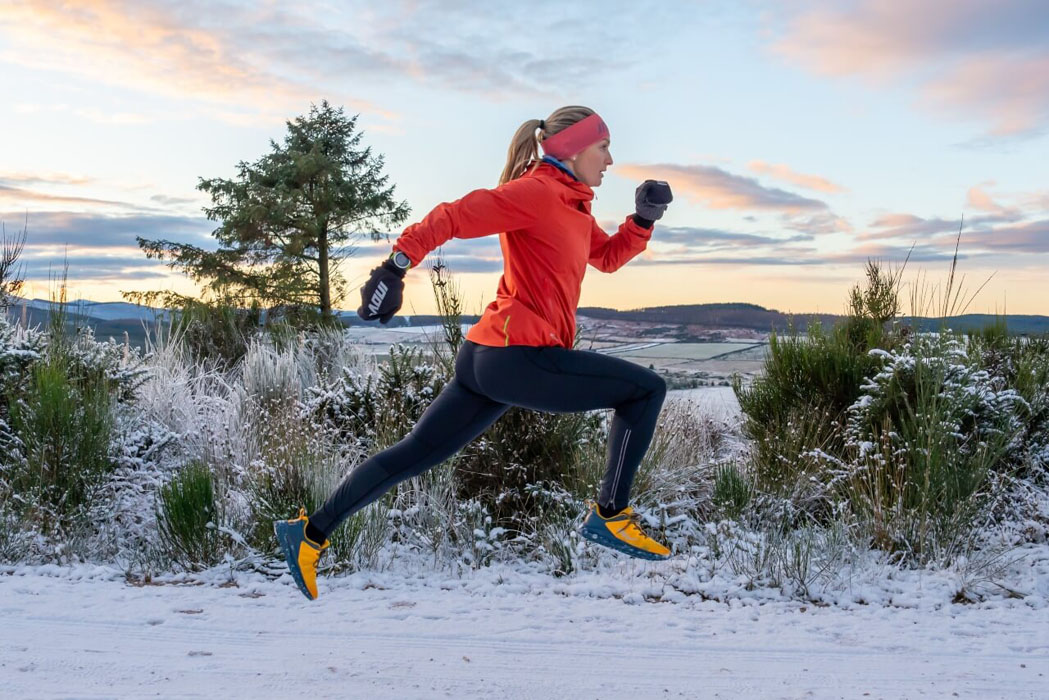
Images & Video By Stuart Ross (@stuartrossmedia)
Reading time: 8 minutes
Warming up properly is a key part of reducing injury risk and running quicker. A thorough warm-up will also make the start of your run easier too! In this guide, GB ultra-trail runner and coach, Meryl Cooper, shares the warm-up exercises she does before a run. There are 16 exercises to choose from in this guide – all with video/imagery and descriptions, as well as Meryl’s exercise picks if you’re short on time.
I’ll be honest, for a long time I didn’t warm up before going running. I have learned that I can’t get away with this anymore – particularly in the winter!
I will often vary my warm-up depending on the training session I’m about to do, what run I did the day before or if I am managing a niggle or challenge in training. For this blog I have given you quite a few different exercises and hopefully this will allow you to do the same.
You don’t have to do all these warm-up exercises before your run! Instead, select the ones which help you to warm up the areas that particularly need attention or that fit the time you have (I have included recommendations of which indoor and outdoor exercises to select if you’re short for time).
WHY DO A WARM-UP BEFORE RUNNING?
As we all know, consistency is key to making progress. So warming up before a run plays a central part in maintaining consistency in training.
There are several reasons why it’s a smart idea to warm-up:
- It primes your body for exercise by raising your heart rate.
- It reduced the risk of injury.
- It reduces those sluggish and stiff feelings which can be around for the first mile (or 6…).
- For trail runners it will improve sharpness and reaction to uneven ground, plus prepare you for the extra demands of the hills.
- If you sit at a computer all day a lot of your muscles and nerves ‘go to sleep’ and you can get quite tight in areas such as the hips, lower back, neck and shoulders. Warming up before running mobilises your joints and activates your muscles, preparing them to work.
Or, as my physio James (@physiorun) puts it: “Just like a warm cuddle, a proper warm-up routine will embrace your muscles and joints, preparing them for the intense running ahead. Dynamic stretches, gentle exercises and a gradual increase in intensity will help your body adapt to the upcoming challenge.”
INDOOR WARM-UP EXERCISES
Tight for time? Do the ball release work (foot and hips), lunge matrix, leg swings and jump around!
BALL RELEASE (FOOT)
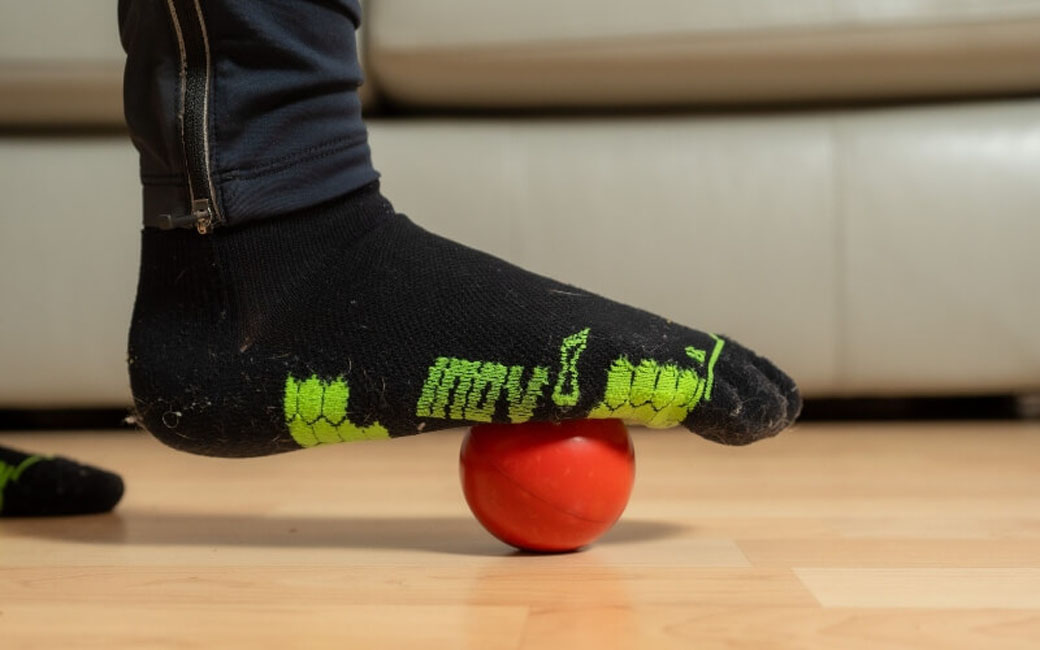
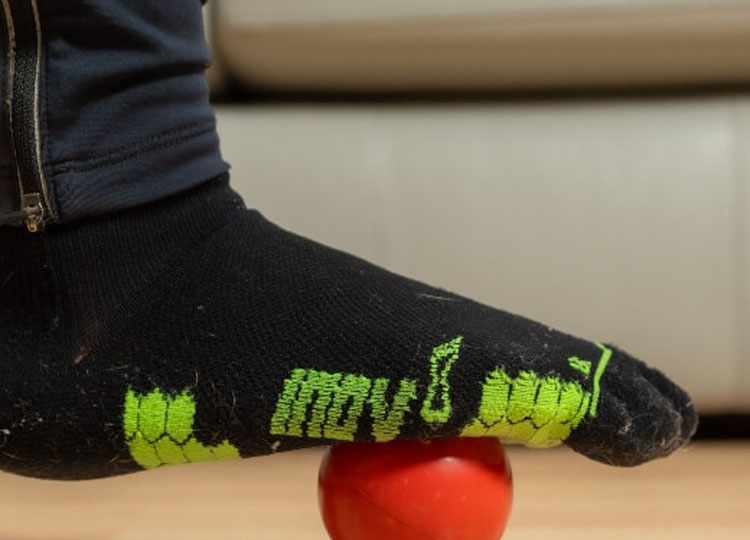
What to do: Get a hard or a spikey ball and roll the soles of each foot.
Why? This exercise will stretch and loosen the fascia so that the underlying muscle tissues can move more freely. If we get too much tension in our feet then they won’t be able to move well and it could lead to injuries further up the chain (or a foot injury such as plantar fasciitis). It’s also important to not neglect your feet as they work very hard, especially in the snow.
Do this exercise for 1-2 minutes on the feet.
ANKLE ROCKS
What to do: Pulse through the feet one by one. Then start to do some two footed ankle rocks, going up onto both toes and then rocking back onto both heels. Feel free to add some ankle rolls too, clockwise and anticlockwise.
Why? Getting the ankle joint moving well will help prepare you for the different gradients and uneven surfaces of trail running. These exercises will also start to dynamically warm-up the lower leg muscles.
Do this exercise for 1 minute.
KNEE TO WALL
What to do: Place your foot a few centimetres away from a flat wall, toes pointing towards the wall. Keep your heel down and bend the knee towards the wall to lightly touch it. As your range improves, you can move your foot back slightly (as long as you’re keeping your heel down).
Why? This exercise will dynamically stretch the soleus and calf muscles whilst increasing the range of motion at your ankle. This will help to prepare you for running uphill.
Do this exercise for 30-45 seconds each side.
BALL RELEASE (HIPS)
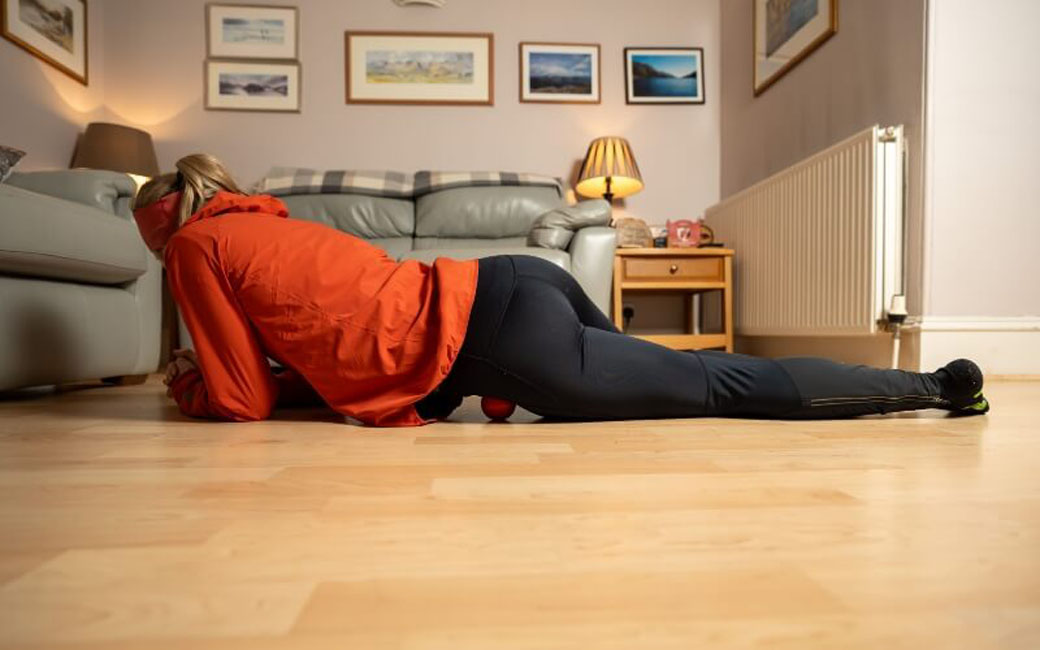
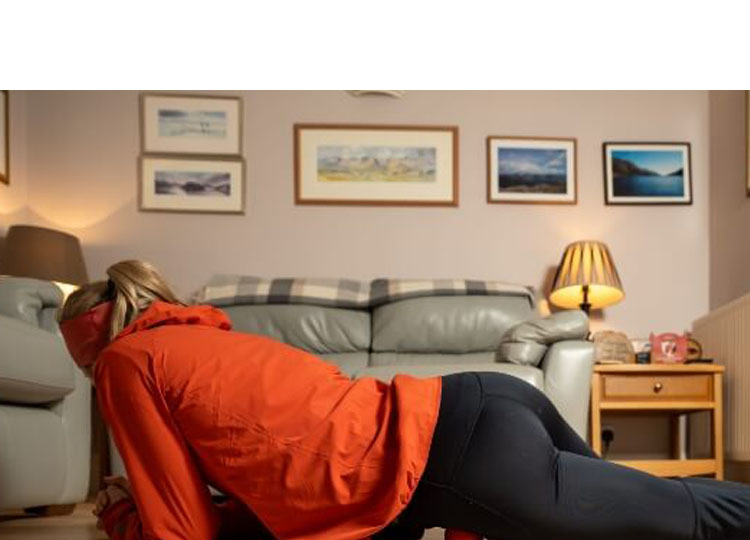
What to do: Use a hard or spikey ball to release any tight muscles around the hips.
Why? To have happy hips! As my physio James (@Physiorun) says: “Hip mobility is an essential aspect of running that should not be overlooked. By taking steps to improve hip mobility, runners can prevent injury, improve performance and enhance their overall running experience.”
HIP CIRCLES
What to do: Stand with your feet a bit wider than shoulder width apart. To start with, push your hips side to side for a few reps and then start the full circles. Rotate your hips in a full circle in one direction, then change direction.
Do this exercise for 30-45 secs in each direction.
LEG SWINGS
What to do: Forward and back leg swings - stand side on to a wall with no obstacles around. Place your left hand on the wall and stand on your left leg. Swing the right leg forward and back from the hip. Start low and gradually get higher as your range increases. Then turn around and repeat on the other side.
Sideways leg swings - turn to face the wall. With two hands on the wall this time, stand on your left leg and swing your right leg away from the body then across your body.
Do 8-10 leg swings forward and back on each side. Then do 8-10 across the body leg swings on each side.
ROLL DOWN
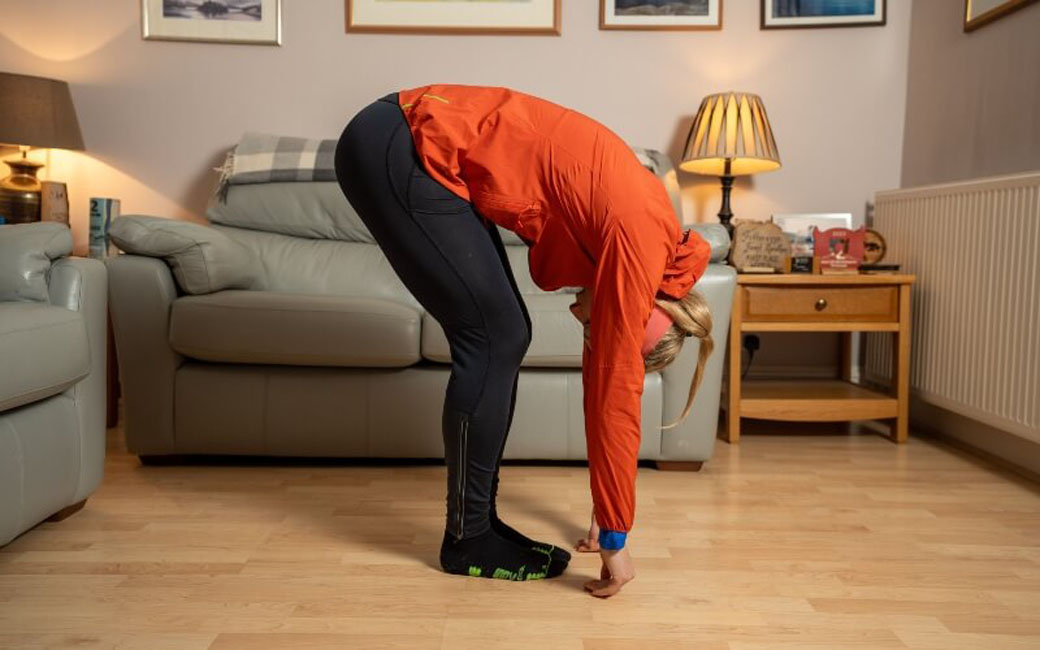
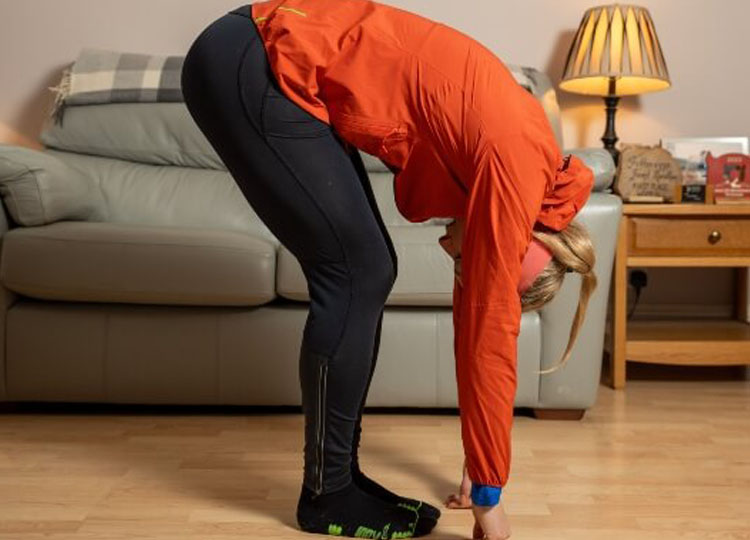
What to do: Take a deep breath in, then, as you slowly breathe out, tuck your chin in and roll down one vertebrae at a time (keeping your knees soft) until your arms are hanging down by your feet. Then, as you breathe in, suck your tummy in and start to reverse the movement you just did, rolling up one vertebrae at a time until you are back standing upright. If you have no lower back issues, keep the movement flowing into a gentle back bend.
Why? This exercise will give the hamstrings a nice dynamic stretch, plus mobilise your spine. It’s a good one to do if you sit a lot during the day.
Do this exercise for 1-2 minutes.
SPLIT SQUAT WITH ARMS ABOVE HEAD
What to do: Stand in a split position with one foot forward and one foot back. The back leg can be placed on a chair or box. Extend both arms above the head, tuck the tailbone underneath activating the core and glutes in the back leg. Lower your knee to just above the floor and then push through the standing foot to bring yourself back to the starting position. Keep the knee of your standing leg in line with the toes and watch that it doesn’t collapse inwards.
Why? This exercise will activate the key running muscles in the standing leg and give a nice dynamic stretch to quadriceps and hip flexors in the back leg if you get the right position of the pelvis. Another great exercise if you sit a lot.
THE LUNGE MATRIX
What to do: You’ll probably prefer to have your shoes on for this exercise. Lunge forward, to the side, diagonally backwards and then rear lunge.
Why? Lunges are great whole-body exercises. Doing the matrix will warm up the key running muscles in the legs (quads and hamstrings) and hips (glutes and hip flexors). It also brings in some lateral movement too, which you might have to do when trail running (think technical terrain or dodging a passing dog!).
Do this exercise 4-8 times on each side (remember the goal is to warm the body up but not exhaust it before your run).
JUMP AROUND (WITH OR WITHOUT YOUR DOG/RUNNING BUDDY!)
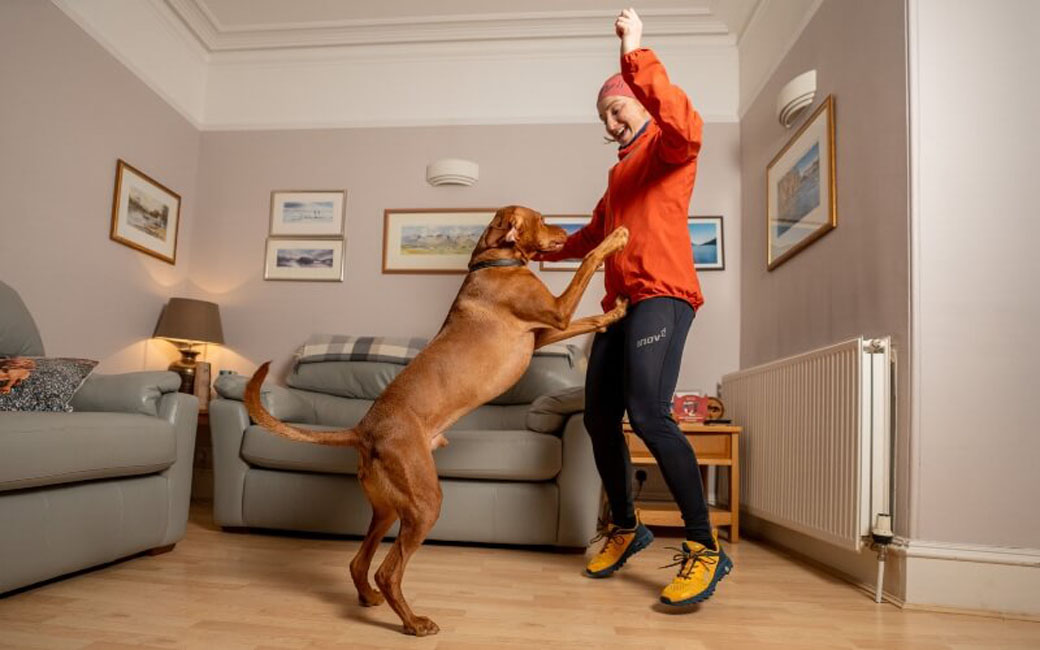
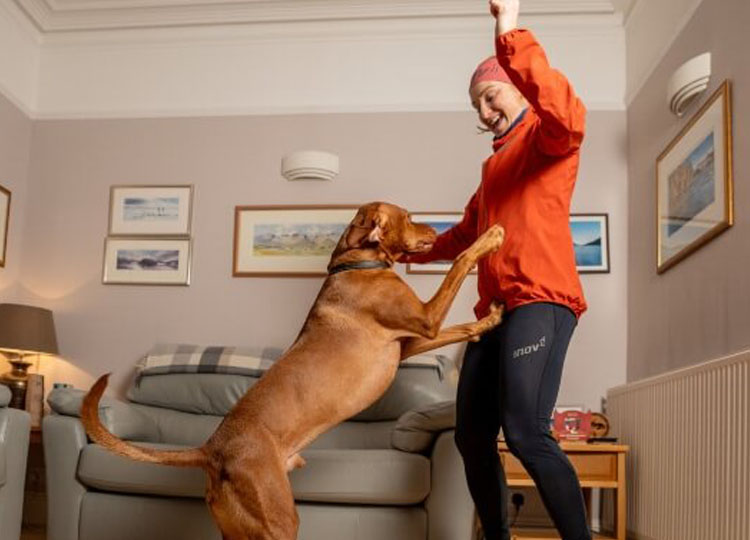
What to do: Put some music on and jump around! This could be doing something like jumping jacks, twist jumps, small split jumps or just enjoy a wee freestyle boogie!
Why? The whole body should now have been mobilised and activated and now you can start to raise the heart rate a bit and load the muscles more like you will when you go out and run!
Jump around for 1-2 minutes (depending on how much fun you are having!).
OUTDOOR WARM-UP EXERCISES
Watch the videos to see how to perform the exercises safely.
Why? These exercises will raise the heart rate and body temperature gradually, help to recruit the muscles that you’re about to use in your run, improve running form, cadence and mobility at the joints (by doing movements which exaggerate aspects of your running gait). These are just some of the benefits, there are more! As I’m sure you will see from this list, doing these warm-up exercises will play a helpful role in reducing the chances of you getting injured.
Do each exercise for 20-30 secs with an easy jog back recovery of 30 secs.
This would make 1 set. You should aim to do 2-3 sets.
Short for time? Do 1 set of butt kicks, karaoke and high knees followed by 1-2 minutes of very easy jogging.
BUTT KICKS
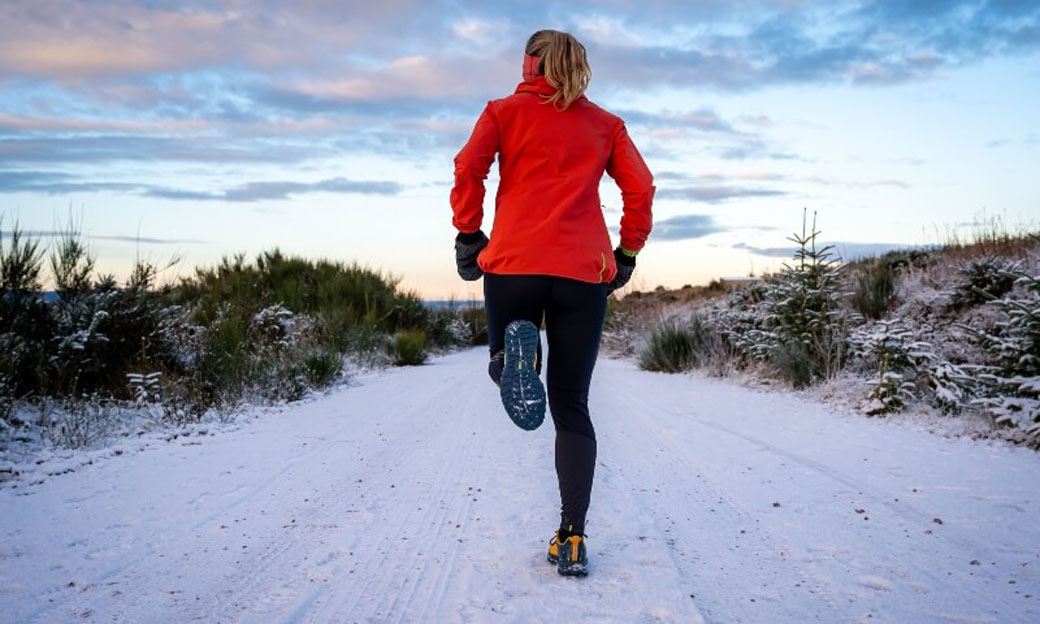

What to do: Keeping dorsi-flexion in the feet as much as possible (think ‘toes up’), quickly bring your heel up to your bottom and back down, alternating legs. You should aim to take quick light steps and use your arms like you would when running. It’s more like a variation of high knees rather than flicking your lower legs up at the back.
GRAPEVINE/CARIOCA
What to do: As you move sideways, cross one leg over the other in front and then behind. Arms can be held up to the side and try to initiate the cross-over action from your hips/core area (rather than the arms). If you feel like you’re salsa dancing then you’re probably doing it correctly! Make sure you do this exercise on both sides.
HIGH KNEES
What to do: Pump the arms and focus on getting a high knee by driving the foot down and then quickly springing the leg back up from the ground.
HAMSTRING KICKS
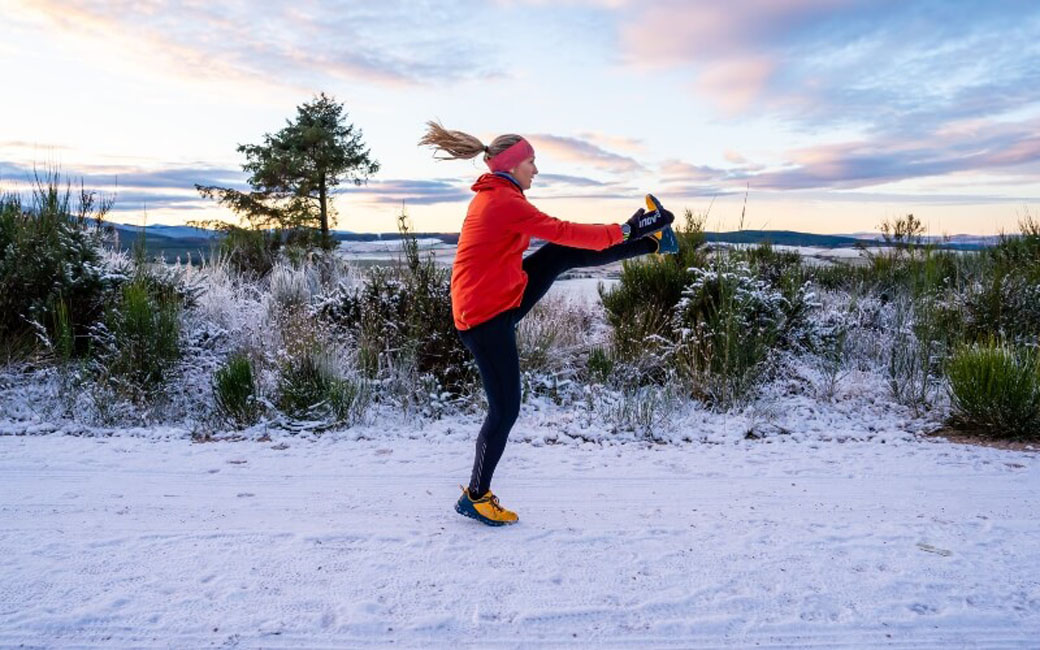
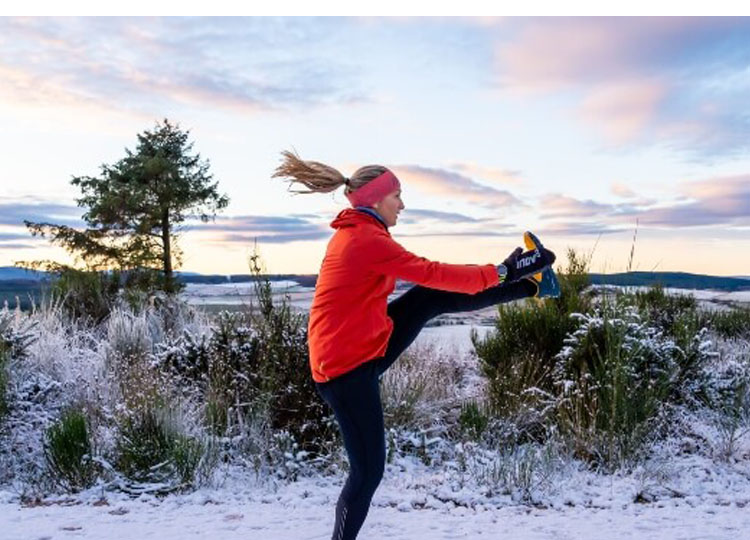
What to do: Bounce on two feet then kick one leg up in front of you and swing the opposite arm to tap the leg. Bounce on two feet and kick up the other leg. Repeat this action. Start small and try get in a bouncy, quick-ish rhythm.
B-SKIP
What to do: There are 3 stages to this exercise – a high knee, then a kick out/the leg extends forward from the knee and then the foot comes down just in front of the body. Then change legs. Again, you want to be in a bouncy rhythm. It requires a bit of extra coordination but it is a great drill, exaggerating the backward pawing motion that your foot makes when you contact the ground before it pulls through. Arms are in running arms position.
BOUNDING
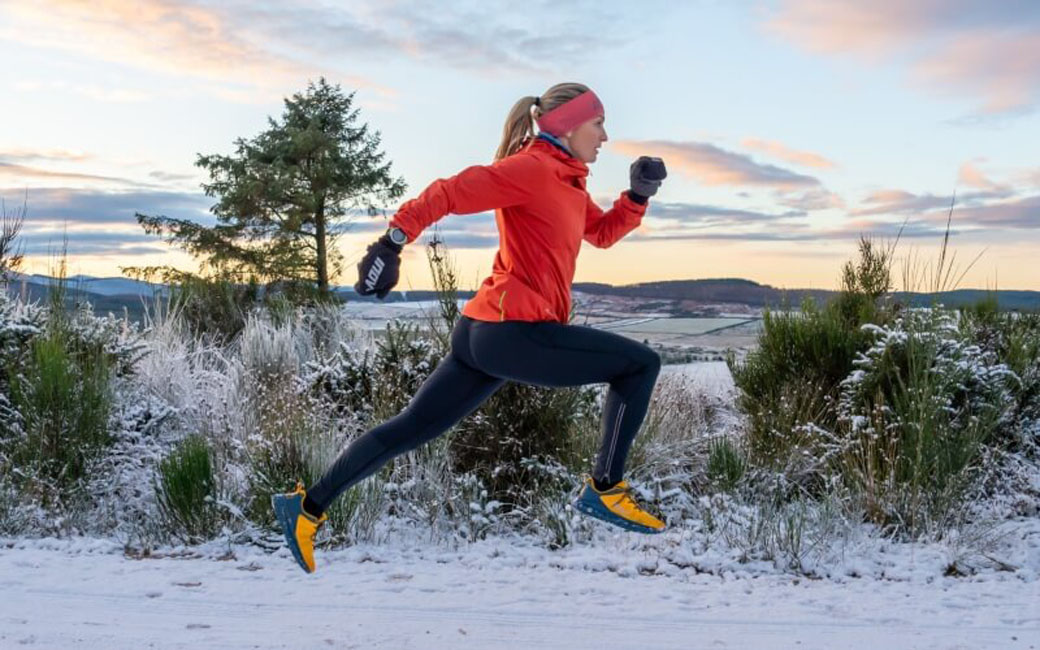
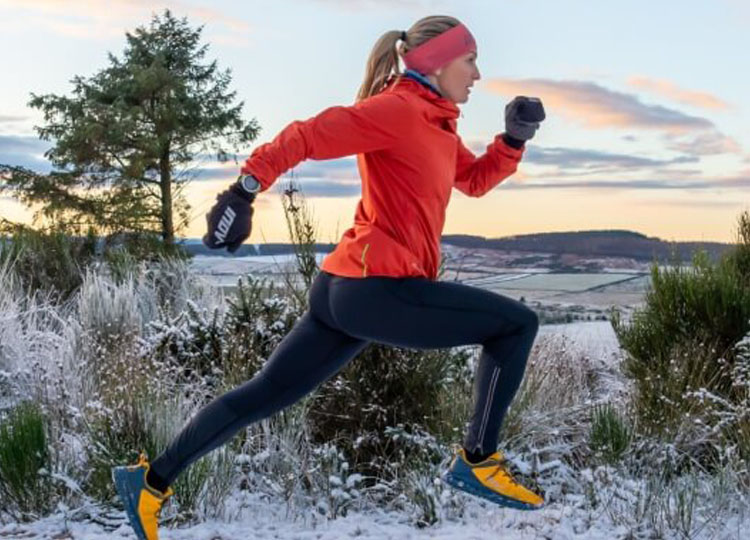
What to do: Drive forwards with a high knee and extending the other leg at the back, alternating legs as you go. Start small whilst you master the movement and then look to put more power and length into each stride. Arms are in running arms position.
